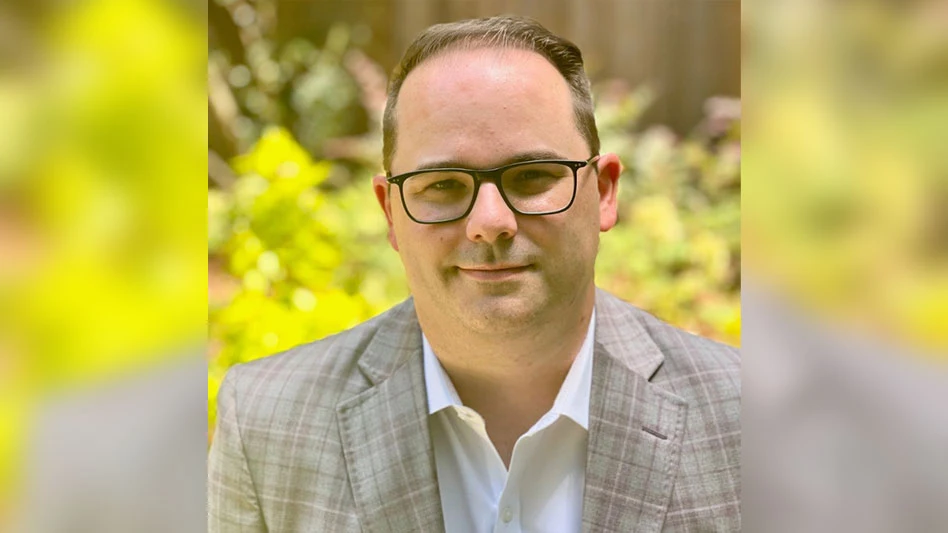
Stanford University is located in the heart of Silicon Valley, where tech is king. So it’s only fitting that its waste services provider would embrace technology to be more efficient. The 8,180-acre campus has ongoing construction and demolition projects as well as 13,000 students moving in and out at various times of the year.
Peninsula Sanitary Service Inc. (PSSI), Stanford, California, provides Stanford University with containers it dubs “debris boxes” to take the waste generated from these projects and droves of moving students. PSSI carries four roll-off box capacity sizes: 8, 15, 20 and 30 cubic yards. The 15-, 20- and 30-cubic-yard boxes also come in short and tall heights. These boxes are serviced by roll-off trucks. Peninsula has 52 debris boxes currently deployed throughout the campus.
Keeping track of and knowing when to service each container takes a lot of time and effort. Andrew Pellegrini, operations manager, PSSI, decided to look for technology that could help and, being so near a plethora of tech companies, he didn’t have to look far.
He found Compology, based in nearby San Francisco. The company, in partnership with Wastequip, Charlotte, North Carolina, offers a monitoring system for waste containers.
“We always try and look for advancements in technology,” Pellegrini says. Data collection is a huge part of the waste industry, he says, and being in the Bay Area puts a lot of tech companies at PSSI’s fingertips that can help.
The Compology system includes camera sensors and a web-based dashboard to track container location, fullness and movement.
TAKING THE PLUNGE
About a year ago, PSSI had Compology sensors installed on its 104 debris boxes. With the sensors, the company can service boxes more quickly because drivers are servicing only the full boxes. If a customer calls and wants a box serviced, a driver can likely fit it into his or her schedule that same day, whereas before it may have taken a day or two to fit into a driver’s schedule.
Keeping track of inventory has been simplified, too. During a large demolition job going on at the campus, the demolition contractor decided that rather than using the typical high-side, end-dump trailers, it wanted to use debris boxes.
“Instead of having to go up and count inventory, I was able to go on the Compology software and know instantly I can have 30 boxes available,” Pellegrini says. For each container, the software tells him where it is, how full it is, customer information and the last time it was picked up.
Pellegrini also can look at pictures of the box going back a few days and see the progression of its fill level. He also can see a dispatch page for the paperless option on the tablets his drivers carry.
“Our drivers don’t want to spend their time looking for containers or manually filling out paperwork,” Pellegrini says. “Using Compology’s tablets, I can dispatch our drivers to exact container locations, and they can easily enter work order information without getting distracted. My drivers are happier, and I get accurate data I can actually use.”
Pellegrini says he is in talks with some of PSSI’s sister companies to begin using the Compology system. He notes that with PSSI being a smaller company within a group of companies, “We are usually the guinea pig.”
EXPANDED SCOPE
Nationwide, Compology says it has thousands sensors deployed. Ben Chehebar, Compology co-founder and chief product officer, says the company’s customers span many different sizes, from small "mom and pop" companies to mid- to large-size operations with 1,000-plus containers.
The sensors typically are installed in the back corner of a roll-off container, allowing the camera to have full visibility of the inside of the container.
An accelerometer in the sensor measures and records when a container gets picked up and put down—proof that the container has been serviced. The sensor’s camera automatically takes photos of the entire contents of the container. The motion actually triggers the camera to take a photo and provide service verification at the exact time of service. This also provides service verification, but also allows for customers to catch contamination and illegal dumping. Image sensors deliver the change in fullness percentage, while GPS tracks the change in location on roll-off containers from the customer’s coordinates to the coordinates of the disposal facility. Pinpointing the location of each container helps with inventory management and also helps drivers know exactly where containers are, reducing search time on routes.
Compology eliminates self-monitoring for end users, too, because the hauler can notify the customer of a full container. Haulers, anticipating fullness and verifying with images, can reach out to end-users/customers to schedule a more timely pick-up while also increasing the number of turns/container by reducing the times where full containers sit unserviced, according to Compology.
Interest is growing. “We started the company about five years ago and have grown steadily since then,” Chehebar says. He says the company literally started out with him and CEO Jason Gates wanting to start a company together. They co-founded the Compology and from those humble beginnings, the company now a team of 20 working out of an office in San Francisco and is growing and has thousands of sensors out in the field.

Explore the September October 2017 Issue
Check out more from this issue and find your next story to read.
Latest from Waste Today
- Cards renews municipal contract with Harrah, Oklahoma
- Waste Pro hires all-star athlete
- C&D World session preview: Key strategies for effective fleet maintenance
- ReMA supports policy measures facilitating collection, safety and proper end-of-life management of small, medium batteries
- Veolia assumes operations at Canadian WTE facility
- Resynergi, Lummus Technology launch modular plastic recycling solution
- New Hampshire House committee advances amended landfill moratorium bill
- Viably teams with Turmec on materials processing systems





